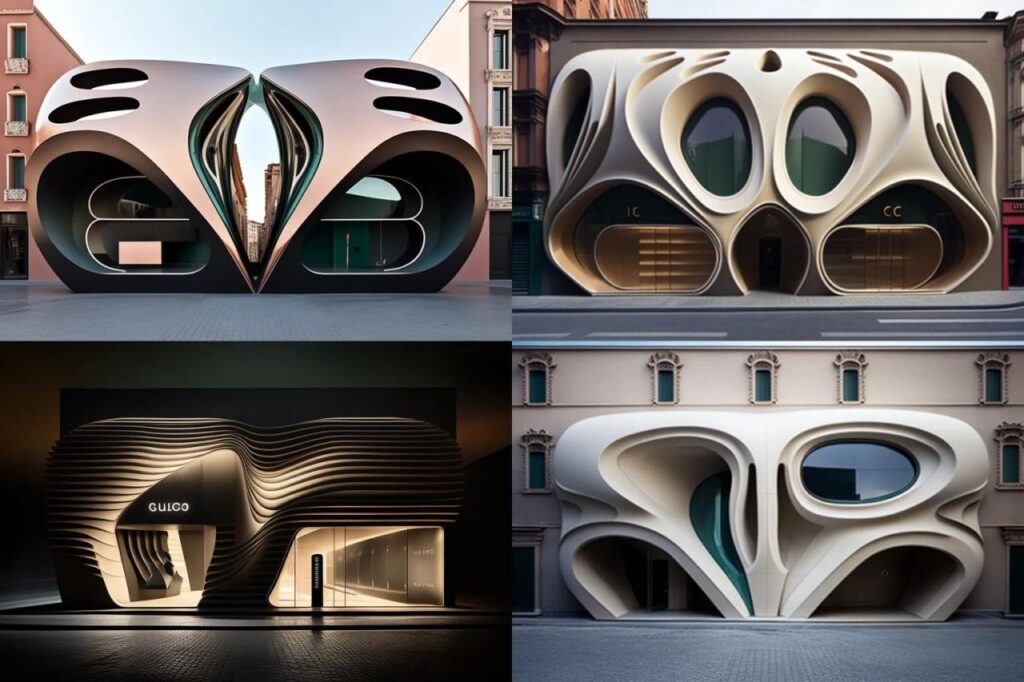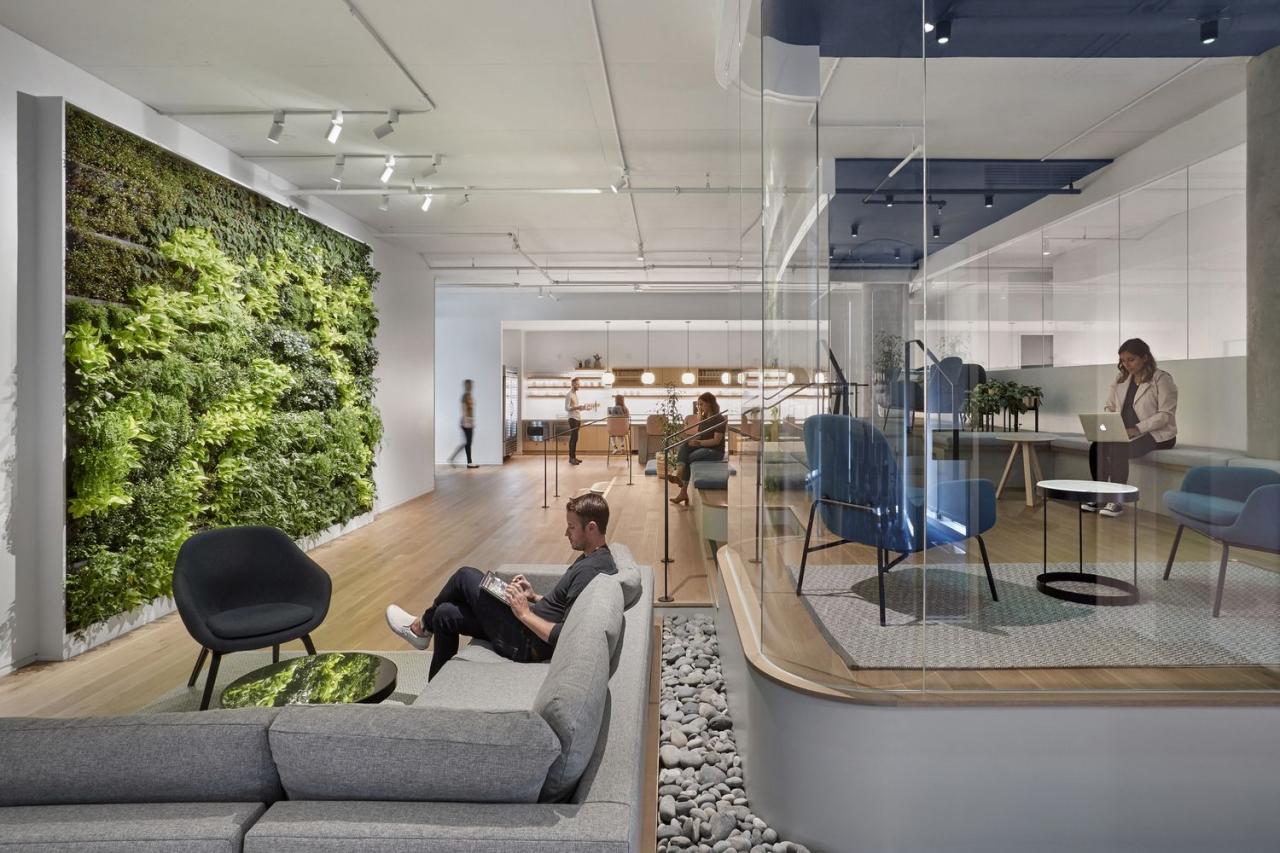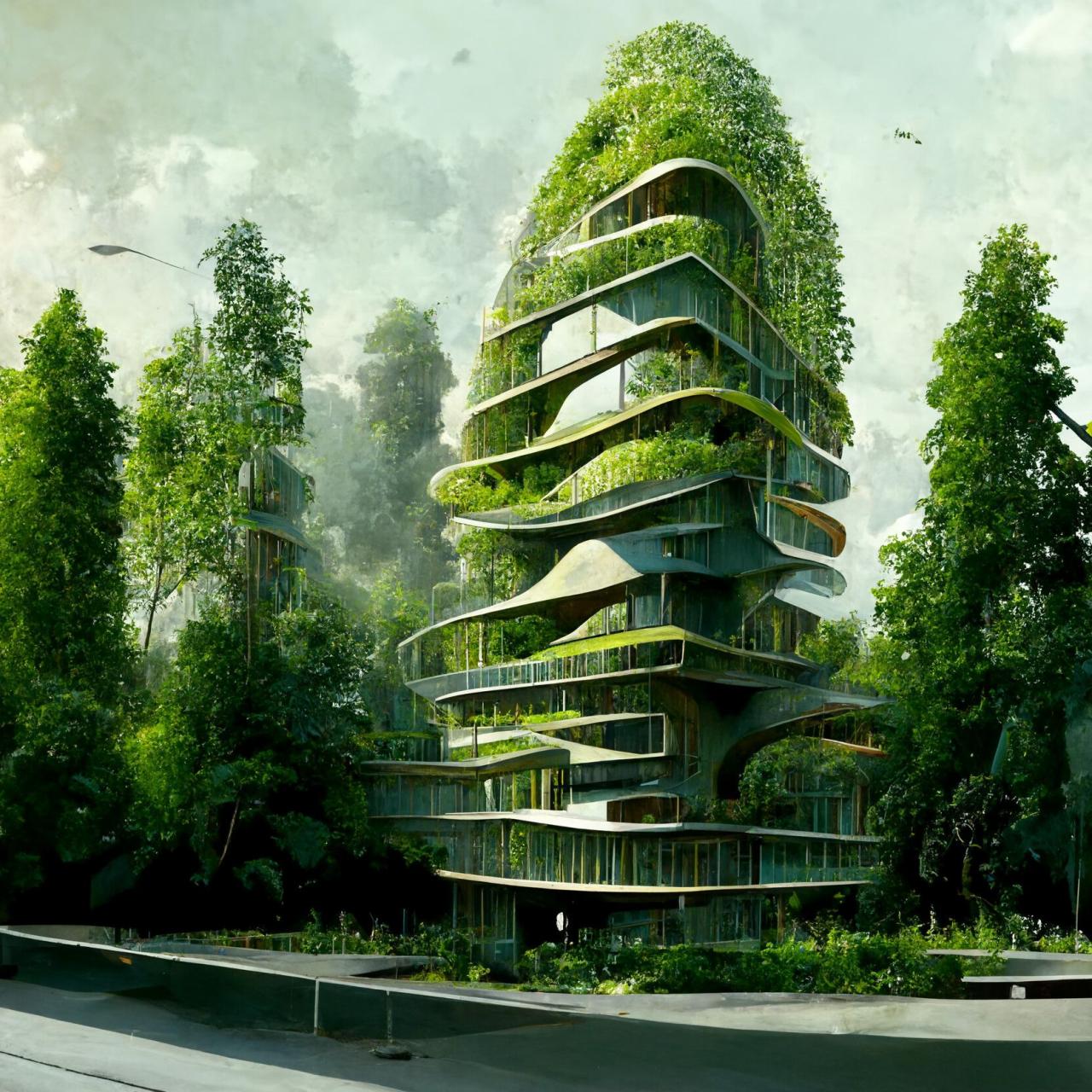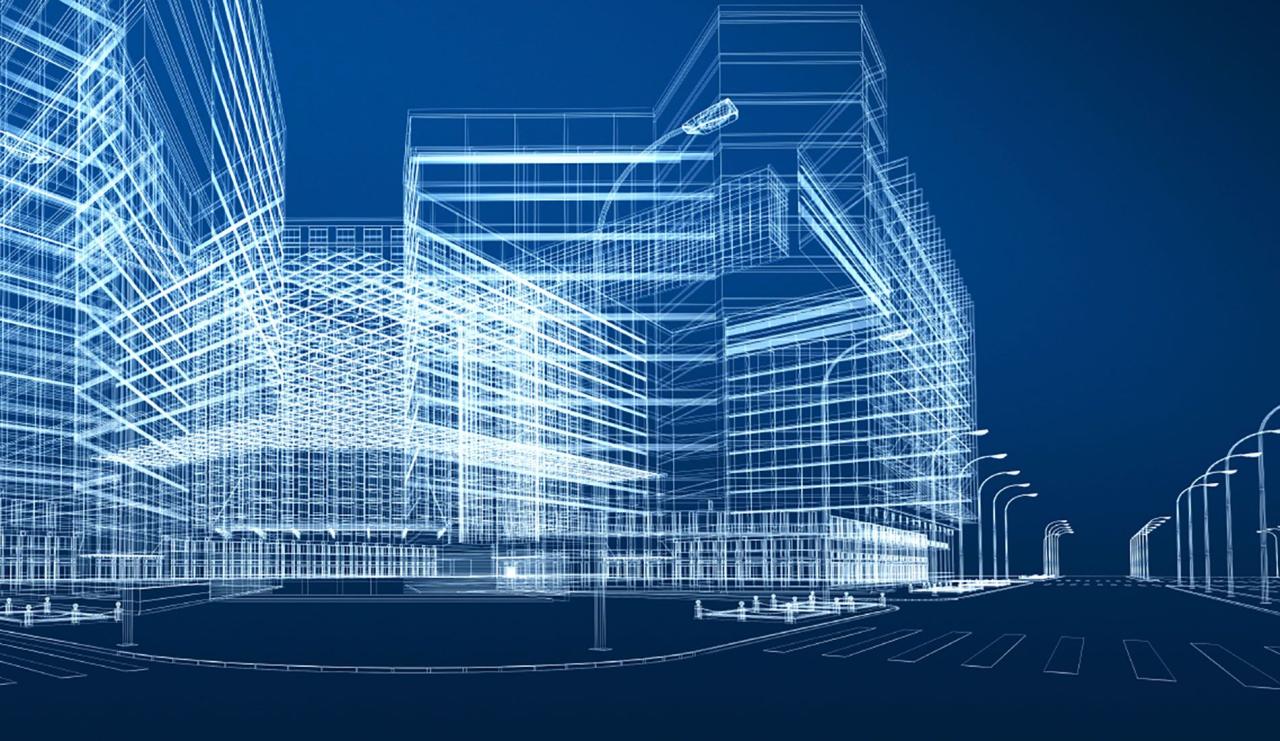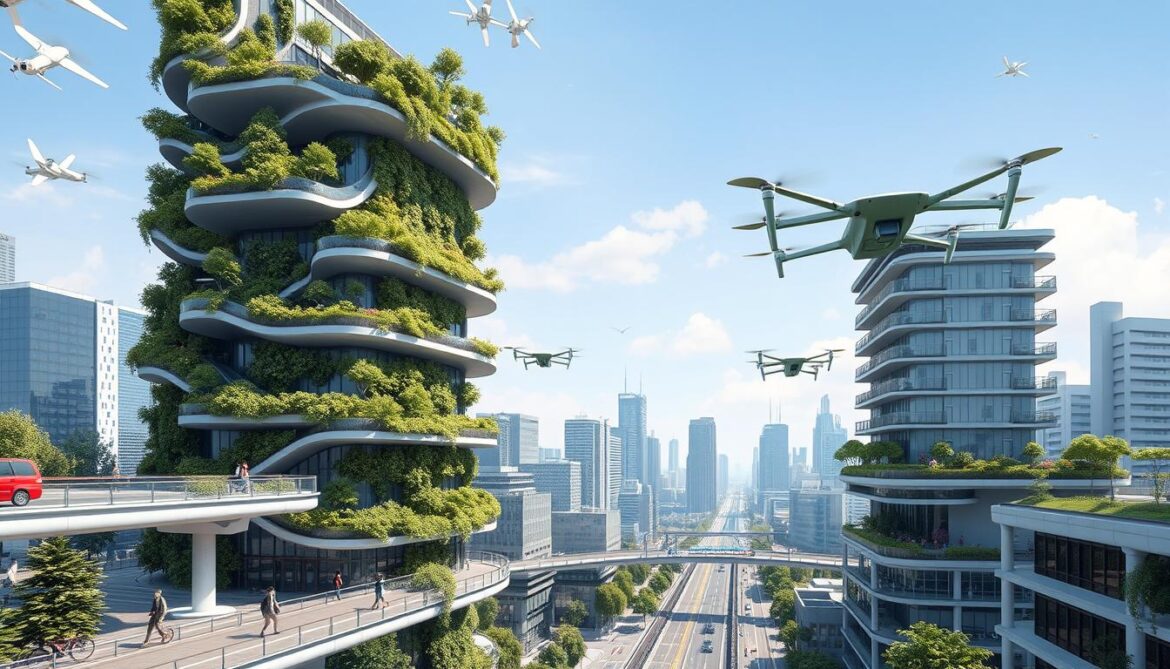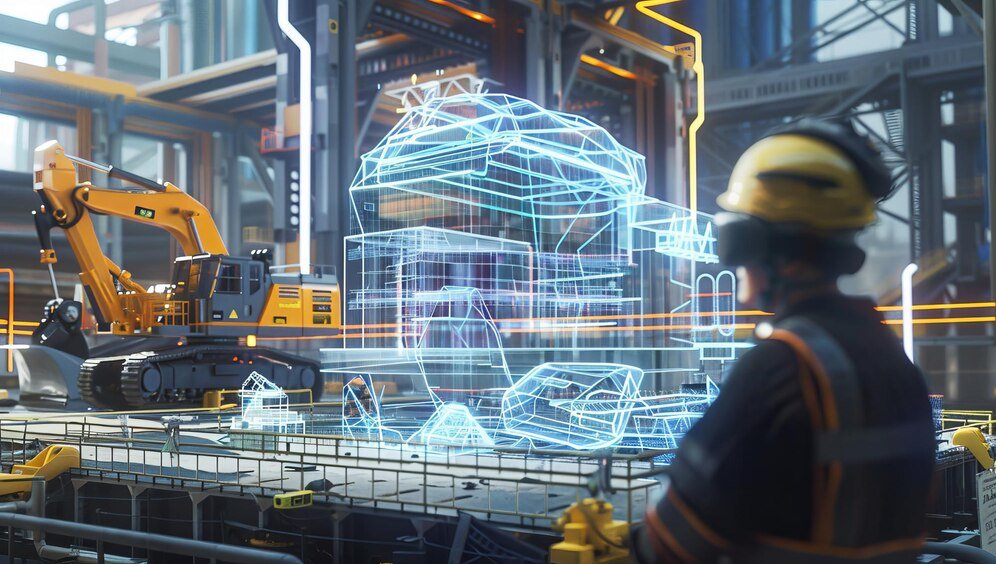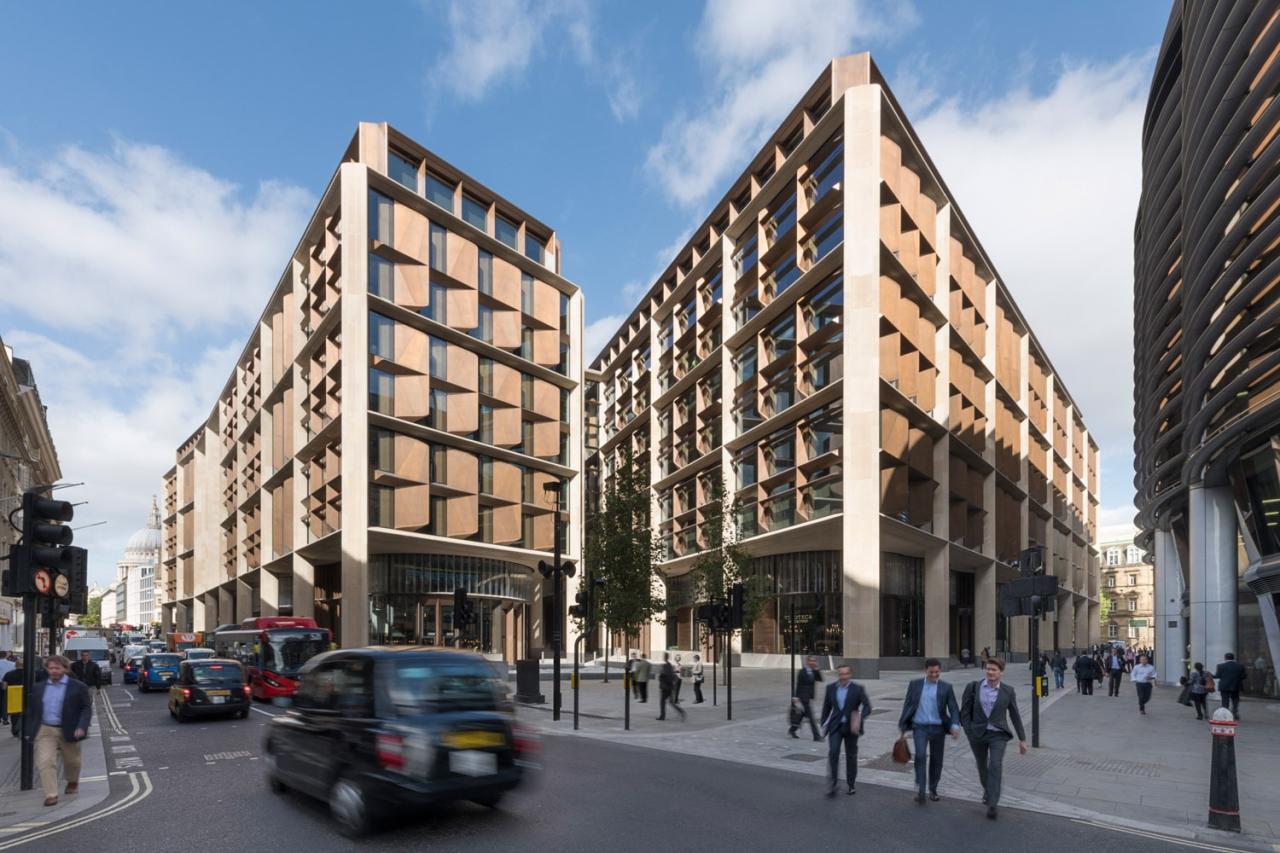The very fabric of our built environment is on the cusp of a profound transformation, driven by the relentless advancement of artificial intelligence. Beyond merely automating tasks, AI is shaping design, fundamentally redefining how structures are conceived, optimized, and interact with their occupants and surroundings. This isn’t just about smarter buildings; it’s about the emergence of truly intelligent structures – responsive, sustainable, and highly efficient habitats that learn, adapt, and predict. From conceptualization to construction and operation, AI is becoming an indispensable partner for architects, engineers, and urban planners, offering unprecedented capabilities to craft the future of our physical world with a level of insight and precision previously unimaginable.
The Evolution of Design: From Manual Craft to Digital Precision
To fully grasp the revolutionary impact of AI on architecture and construction, it’s crucial to understand the historical trajectory of design practices and the limitations that AI is now poised to overcome.
A. The Traditional Architect: Art, Craft, and Limitations
For millennia, architectural design was an intensely manual and intuitive process, a blend of art, craft, and engineering. Architects meticulously drafted plans by hand, relying on their experience, intuition, and limited computational tools. While this approach produced timeless masterpieces, it had inherent limitations:
- Iterative and Time-Consuming: Design iterations were labor-intensive. Every change, no matter how small, required significant manual redrawing and recalculation, making the design process slow and costly. This constrained the number of design options that could be explored.
- Limited Optimization Capabilities: Optimizing for complex factors like energy efficiency, structural integrity, material usage, or occupant comfort involved extensive manual calculations and approximations. Achieving true multi-objective optimization was often beyond practical reach, leading to designs that were suboptimal in various aspects.
- Human Bias and Subjectivity: While creativity is paramount, human designers are inherently influenced by their biases and established conventions. This could sometimes limit innovative solutions, especially for complex problems that defy traditional approaches.
- Data Scarcity: Accessing and analyzing vast datasets related to environmental performance, material properties, structural behavior under stress, or occupant movement was cumbersome. Decisions were often based on limited data samples or historical precedents rather than comprehensive analysis.
- Collaboration Challenges: Coordinating large-scale projects involved extensive paperwork and sequential workflows, often leading to miscommunication, errors, and delays as information passed between different disciplines (architects, structural engineers, mechanical engineers).
B. The Digital Revolution: CAD to BIM
The late 20th century saw the advent of the digital revolution in design, starting with Computer-Aided Design (CAD) and evolving into Building Information Modeling (BIM).
- Computer-Aided Design (CAD): CAD tools digitized the drafting process, allowing architects to create precise 2D drawings and 3D models more quickly. It improved accuracy and efficiency in documentation but largely remained a digital drafting board, not a design intelligence tool.
- Building Information Modeling (BIM): BIM marked a significant leap. It created intelligent 3D models containing rich data about building components, their properties, and relationships. This enabled better visualization, clash detection, quantity take-offs, and improved collaboration among stakeholders by providing a shared, data-rich model. However, BIM is primarily a data management and coordination tool, not an generative design engine. It manages information about a design, but doesn’t autonomously create designs.
- Parametric Design: A subset of digital design, parametric tools allowed designers to define relationships between elements using algorithms. Changing one parameter would automatically update related components, facilitating complex geometries and iterative design within predefined rules. While powerful, it still required human input to define the initial parameters and algorithms.
C. The AI Era: Beyond Automation to Augmentation and Generation
The integration of Artificial Intelligence represents the next, most profound leap in design. AI transcends mere automation; it enters the realm of augmentation and generation, acting as a cognitive partner, capable of processing information, identifying patterns, and even creating novel design solutions.
- Augmented Intelligence: AI tools assist human designers by performing complex analyses, suggesting optimizations, and handling repetitive tasks, thereby freeing up designers to focus on higher-level creative problems.
- Generative Design: This is perhaps the most revolutionary aspect. AI algorithms, given a set of constraints and objectives (e.g., maximize natural light, minimize material use, optimize circulation), can autonomously generate thousands, even millions, of design variations that meet or exceed human-designed solutions. Designers then curate and refine these AI-generated options.
- Predictive Modeling: AI can analyze vast datasets to predict performance (e.g., energy consumption, occupant flow, structural behavior) with far greater accuracy than traditional methods, allowing for proactive design adjustments.
- Learning Systems: AI models can learn from past projects, performance data, and user feedback, continuously improving their design recommendations and optimization capabilities over time.
This marks a shift from tools that assist human drawing to tools that actively participate in the creative and problem-solving aspects of design, heralding an era of truly intelligent structures.
Core Ways AI is Shaping Architectural and Structural Design
Artificial intelligence is impacting every phase of the design and construction lifecycle, from initial conceptualization to post-occupancy evaluation.
A. Generative Design and Optimization
This is perhaps the most talked-about application of AI in design. Generative design allows AI algorithms to explore vast solution spaces and create numerous design alternatives based on specified parameters and constraints.
- Rapid Iteration and Exploration: Designers input objectives (e.g., maximize usable space, minimize shading, optimize structural load distribution) and constraints (e.g., site boundaries, material limits, budget). The AI then rapidly generates thousands or millions of potential designs, identifying those that best meet the criteria. This enables the exploration of solutions humans might never conceive.
- Multi-Objective Optimization: AI can simultaneously optimize for multiple, often conflicting, objectives. For example, designing a building that maximizes natural light, minimizes energy consumption, provides optimal thermal comfort, and uses the least amount of structural material—a task incredibly difficult for human designers alone.
- Complex Geometries and Forms: AI can generate and analyze highly complex, non-linear geometries that are difficult to model manually but offer superior performance (e.g., organic shapes inspired by nature that optimize airflow or structural strength).
- Space Planning and Layout: AI can optimize internal layouts of buildings (offices, hospitals, residential units) to improve workflow, minimize travel distances, enhance privacy, or maximize rentable space, considering various parameters like adjacency requirements and traffic flow.
B. Performance Prediction and Simulation
AI’s ability to analyze large datasets makes it exceptional at predicting how a design will perform under various real-world conditions before construction even begins.
- Energy Performance Simulation: AI models can predict a building’s energy consumption based on its design, materials, orientation, and local climate data with high accuracy. This allows architects to make informed decisions that lead to highly energy-efficient or even net-zero buildings.
- Structural Analysis and Optimization: AI can run advanced simulations to analyze structural integrity, identify weak points, and suggest material optimizations, leading to safer, more efficient structures that use less material. This includes predicting how structures will respond to seismic activity, wind loads, or extreme weather.
- Occupant Behavior and Comfort: AI can simulate pedestrian flow in public spaces, optimize evacuation routes, or predict thermal comfort zones within a building based on airflow and solar gain, ensuring user well-being and efficient space utilization.
- Daylighting and Shading Analysis: AI can simulate sun paths and shadows throughout the year to optimize window placement, facade design, and shading devices for maximum natural light penetration while minimizing glare and heat gain.
C. Material Science and Construction Optimization
AI is also revolutionizing the selection and use of materials, as well as the efficiency of the construction process itself.
- Smart Material Selection: AI can analyze vast databases of material properties, costs, supply chains, and environmental impacts to recommend optimal materials for specific design requirements, sustainability goals, and budget constraints. This includes identifying novel composite materials with superior performance.
- Waste Reduction and Circular Economy: By optimizing material cuts and construction sequences, AI can significantly reduce construction waste. It can also identify opportunities for using recycled materials or designing components for future disassembly and reuse, promoting circular economy principles.
- Robotics and Automation in Construction: AI powers robotic systems used in construction, from automated bricklaying robots to drones for site surveying and progress monitoring. AI algorithms guide these robots, optimize their paths, and interpret sensor data to ensure precision and efficiency, reducing manual labor and improving safety.
- Predictive Maintenance for Buildings: Once a building is operational, AI can analyze sensor data (e.g., HVAC performance, elevator usage, power consumption) to predict maintenance needs before failures occur. This shifts from reactive to proactive maintenance, extending asset lifespan and reducing operational costs.
D. Smart Building Operation and Management
Beyond design and construction, AI is central to the functionality of truly intelligent structures post-occupancy.
- Optimized HVAC and Lighting: AI-powered building management systems (BMS) analyze real-time data from sensors (temperature, humidity, occupancy, daylight levels) to dynamically adjust HVAC systems and lighting. This maximizes energy efficiency while maintaining optimal comfort for occupants, adapting to changing conditions and usage patterns.
- Predictive Security and Access Control: AI can analyze surveillance footage for anomalous behavior, recognize faces or gait for access control, and predict potential security threats, enhancing safety and responsiveness.
- Space Utilization Analysis: AI can track occupancy patterns to provide insights into how spaces are being used. This data informs facility managers on how to optimize layouts, cleaning schedules, and resource allocation, especially relevant for flexible workplaces.
- Personalized Environments: In the future, AI in intelligent structures could learn individual occupant preferences (e.g., preferred temperature, lighting, music) and autonomously adjust the environment accordingly, creating highly personalized and comfortable living or working spaces.
Methodologies and Technologies: Bringing AI to Design
The practical application of AI in design relies on specific methodologies and a robust technological infrastructure.
A. Parametric and Algorithmic Design Reinvented by AI
While parametric design existed before AI, AI takes it to a new level. AI algorithms can not only adjust parameters but also discover optimal parametric relationships or even generate entirely new algorithmic rules for design. This is often integrated with visual programming interfaces.
B. Machine Learning (ML) Models
At the heart of many AI design applications are various Machine Learning models:
- Generative Adversarial Networks (GANs): Used for generating new design forms, textures, or even entire floor plans that mimic the style or characteristics of a training dataset.
- Reinforcement Learning: Algorithms learn optimal design strategies through trial and error, getting ‘rewards’ for designs that meet objectives and ‘penalties’ for those that don’t. Useful for complex optimization problems.
- Neural Networks (Deep Learning): Applied for pattern recognition (e.g., recognizing design elements, analyzing images of building defects), predictive modeling (e.g., energy consumption), and complex spatial analysis.
- Computer Vision: Enables AI to ‘see’ and interpret images and video from construction sites (e.g., progress tracking, safety compliance, defect detection) or within smart buildings (occupancy monitoring).
C. Data Collection and Management
AI is only as good as the data it’s trained on. High-quality, diverse datasets are crucial for effective AI in design. This includes:
- Building Information Models (BIM) data: Rich semantic data about building elements.
- Sensor data: Real-time information from IoT sensors within buildings (temperature, humidity, CO2 levels, occupancy, energy use).
- Environmental data: Climate data, solar radiation, wind patterns, seismic activity.
- Historical project data: Performance metrics from past construction projects, cost data, material properties.
- Geospatial data: Maps, terrain models, urban context.
Effective data management strategies, including data lakes and robust data pipelines, are essential to feed AI models.
D. Cloud Computing and High-Performance Computing (HPC)
Training complex AI models and running sophisticated simulations often requires immense computational power. Cloud computing platforms (AWS, Azure, Google Cloud) provide scalable and on-demand access to GPUs, TPUs, and HPC clusters, making advanced AI design feasible for a wider range of firms.
E. Digital Twins Technology
The concept of a Digital Twin – a virtual replica of a physical asset (like a building) that is continuously updated with real-time data from sensors – is intrinsically linked to AI in design. AI analyzes data from the digital twin to simulate performance, predict issues, optimize operations, and inform future design modifications. This creates a powerful feedback loop between the physical and digital worlds.
Challenges and Ethical Considerations in AI-Driven Design
Despite its immense potential, the widespread adoption of AI in shaping design also presents significant challenges and raises important ethical questions that must be addressed responsibly.
A. Data Privacy and Security
Intelligent structures collect vast amounts of data about occupants, energy usage, and building performance. Ensuring the privacy and security of this sensitive data is paramount. Robust encryption, anonymization techniques, and strict data governance policies are essential to prevent misuse or breaches, especially when dealing with personal occupancy patterns or health-related data within buildings.
B. Algorithmic Bias and Fairness
AI models learn from the data they are trained on. If this data is biased, the AI’s design outputs or operational decisions can perpetuate or even amplify existing biases. For instance, an AI trained on designs from specific regions or demographics might struggle to generate culturally appropriate or equitable solutions elsewhere. Ensuring fairness, transparency, and explainability in AI algorithms is a significant ethical challenge.
C. Job Displacement vs. Augmentation
The increasing automation offered by AI in design raises concerns about job displacement for traditional architects, drafters, and even some engineers. While proponents argue that AI will augment human capabilities, freeing professionals for more creative and strategic tasks, there’s a need to proactively address the skill shift required and invest in retraining programs. The role of the human designer will evolve, not necessarily disappear.
D. Legal and Liability Frameworks
Who is responsible if an AI-generated design leads to a structural failure, an energy inefficiency, or a security vulnerability? Establishing clear legal and liability frameworks for AI-driven designs is a complex challenge. Current regulations are largely based on human responsibility, and new paradigms are needed to address AI’s role in decision-making and potential errors.
E. Integration with Legacy Systems and Workflows
The construction industry is often perceived as slow to adopt new technologies. Integrating advanced AI tools with existing, often siloed, legacy systems and established workflows can be a significant hurdle. Interoperability issues, data format incompatibilities, and resistance to change can slow down adoption rates.
F. Over-Reliance and Loss of Human Intuition
There’s a risk of over-reliance on AI-generated solutions, potentially leading to a diminishing of human intuition, creativity, and critical thinking skills. Designers might become mere curators of AI outputs rather than active participants in the creative process. Maintaining the balance between AI assistance and human oversight is crucial to ensure meaningful and innovative designs.
G. High Initial Investment and Accessibility
Implementing cutting-edge AI in design requires significant initial investment in specialized software, high-performance computing infrastructure, and skilled personnel. This can create a barrier to entry for smaller firms, potentially exacerbating existing inequalities within the industry and concentrating advanced capabilities in larger, more resource-rich organizations.
The Future of Design: A Symbiotic Relationship with AI
As AI continues to mature and integrate deeper into the design workflow, the future of architecture and construction will be characterized by a symbiotic relationship between human ingenuity and artificial intelligence.
A. Human-AI Collaboration: The Centaur Model
The most promising future involves a human-AI collaboration model, akin to the ‘centaur’ in chess (human and computer working together). Human designers will set the vision, define the constraints, evaluate the aesthetic and experiential qualities, and make ethical judgments. AI will handle the iterative generation, complex optimization, performance simulation, and data analysis, providing an unprecedented array of informed choices to the human.
B. Hyper-Personalized and Adaptive Spaces
AI will enable the creation of highly personalized and adaptive spaces. Buildings will learn individual preferences and usage patterns, dynamically adjusting environments for optimal comfort, health, and productivity. This could range from personalized lighting and temperature zones to responsive layouts that reconfigure based on real-time occupancy.
C. Cradle-to-Cradle Design and Circular Economy
AI’s analytical capabilities will be pivotal in achieving true cradle-to-cradle design and fostering a fully circular economy in construction. AI will optimize material passports, track resource flows, predict recyclability, and design for disassembly, ensuring that buildings are not just efficient during their use but also contribute positively to the environment throughout their entire lifecycle.
D. Resilient and Self-Healing Structures
The integration of AI with advanced sensor networks will lead to resilient and potentially self-healing structures. AI systems will continuously monitor structural integrity, detect micro-fractures, predict material fatigue, and even trigger automated repair mechanisms (e.g., using self-healing concretes or robotic patching), significantly extending the lifespan and safety of buildings, especially in extreme environments.
E. Democratization of Complex Design
While high initial investment is a challenge, the eventual maturation and commoditization of AI design tools could lead to the democratization of complex design capabilities. AI might allow smaller firms or even individuals to tackle highly optimized or complex projects that previously required massive teams and specialized expertise, broadening access to advanced design methodologies.
F. Predictive Urban Planning and Smart Cities
Beyond individual buildings, AI will play a critical role in predictive urban planning and the development of truly smart cities. AI will analyze urban data (traffic flow, energy consumption, waste generation, demographic shifts) to optimize city infrastructure, predict resource needs, design more efficient transportation networks, and create more livable, sustainable urban environments.
Conclusion
The influence of Artificial Intelligence on the design and construction industry is undeniable and transformative. It is rapidly transitioning from a tool for mere automation to a powerful partner capable of augmenting human creativity, generating novel solutions, and optimizing structures with unparalleled precision and insight. This shift heralds the era of intelligent structures – buildings and infrastructure that are not static entities but dynamic, responsive, and learning environments.
While the path to widespread AI integration is paved with challenges, including data privacy, algorithmic bias, and the need for significant upskilling, the trajectory is clear. The future of design will be characterized by a deep, symbiotic relationship between human designers and AI, enabling the creation of hyper-optimized, sustainable, resilient, and human-centric built environments. For architects, engineers, and urban planners, understanding and embracing AI is not just about staying relevant; it’s about unlocking the potential to design and build a future that is smarter, more efficient, and ultimately, better for humanity. AI is not just shaping design; it’s shaping the world we will inhabit.

